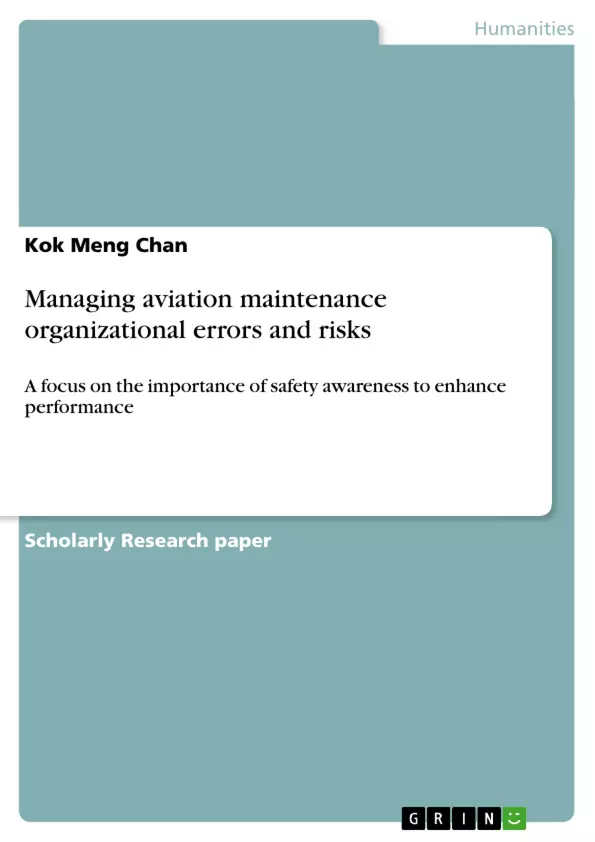To manage risks and errors, there must be a good understanding, not just as to what has happened but why did it happen in order to determine the root problems and causes. Using the Reason model (Reason, 1991), investigations into these occurrences are made possible to provide the basis for identifying threats, flawed defense mechanism and conducting unsafe organizational conditionals. It makes sense as a continuum effort to manage aviation maintenance errors and risks to enhance safety and performance in the long term through identifying them and implanting vital defenses. A safety culture can foster these safe activities by creating trust and dialogue between management and individuals within a maintenance repair organization (MRO). The good safety culture aspects are pervasively within the shared attitudes of concern and care in the MRO and involves with the management. Surrounding this open atmosphere, there should have systems that share important data whereby the workforce are encouraged to make reports with trust and fairness. One shared concensus on collecting these data is by implementing of maintenance error management system (MEMS). Implications of active and latent failures and the benefits of maintenance resource training (MRM) are further discussed.
Inhaltsverzeichnis (Table of Contents)
- Abstract
- Introduction
- Background
- Overview and definition- The Reason Model
- The Living errors and barriers
- Safety culture- The shared beliefs within individuals in MRO
- Maintenance error system (MEMS)
- Examples of active and latent failures
Zielsetzung und Themenschwerpunkte (Objectives and Key Themes)
This paper examines the importance of safety awareness in managing errors and risks within aviation maintenance organizations (MROs). It aims to highlight the crucial role of safety culture, effective communication, and robust data collection in creating a safer and more efficient maintenance environment.
- The impact of errors and risks in aviation maintenance and the need for a proactive approach to safety.
- The significance of the Reason Model in understanding and addressing maintenance errors.
- The importance of safety culture in fostering trust, communication, and reporting within MROs.
- The role of Maintenance Error Management Systems (MEMS) in collecting and analyzing data to improve safety practices.
- The distinction between active and latent failures and their implications for safety management.
Zusammenfassung der Kapitel (Chapter Summaries)
The paper begins by introducing the context of aviation maintenance errors and risks, using the example of the Aloha Airlines Boeing 737 incident. It emphasizes the critical role of maintenance in ensuring aviation safety and the need for a comprehensive approach to managing errors.
The Reason Model is presented as a framework for understanding the underlying causes of errors and implementing preventative measures. The concept of "Swiss cheese model" is explained, highlighting how multiple failures can align to create catastrophic events.
The paper then explores the concept of safety culture within MROs. It emphasizes the importance of trust, communication, and data sharing in fostering a proactive safety environment. The implementation of Maintenance Error Management Systems (MEMS) is discussed as a means of collecting and analyzing data to improve safety practices.
The paper concludes by providing examples of active and latent failures and their implications for safety management. The importance of individual responsibility and proactive hazard identification is emphasized.
Schlüsselwörter (Keywords)
This text explores the crucial topic of safety awareness in managing errors and risks within aviation maintenance organizations. It emphasizes the importance of safety culture, communication, and data collection, using terms like Reason Model, MEMS, and active/latent failures. The paper highlights the need for a proactive approach to safety management, emphasizing the significant role of individual responsibility and organizational policies in ensuring a safe and efficient maintenance environment.
- Citar trabajo
- Kok Meng Chan (Autor), 2011, Managing aviation maintenance organizational errors and risks, Múnich, GRIN Verlag, https://www.grin.com/document/271115



